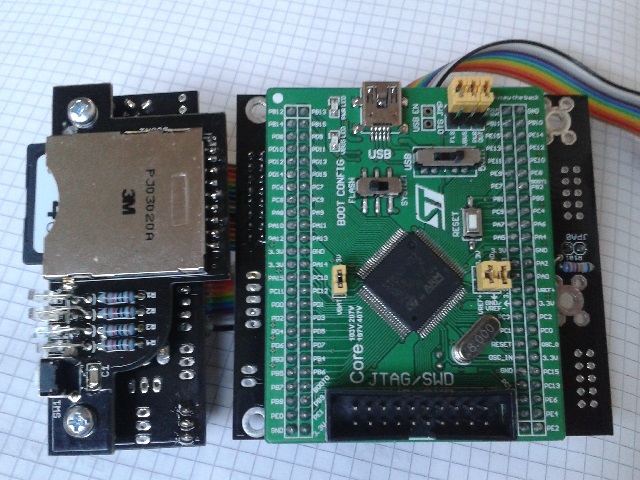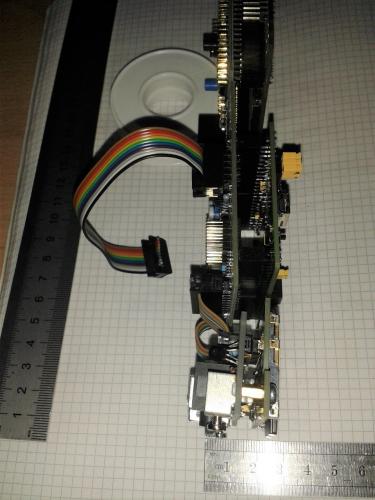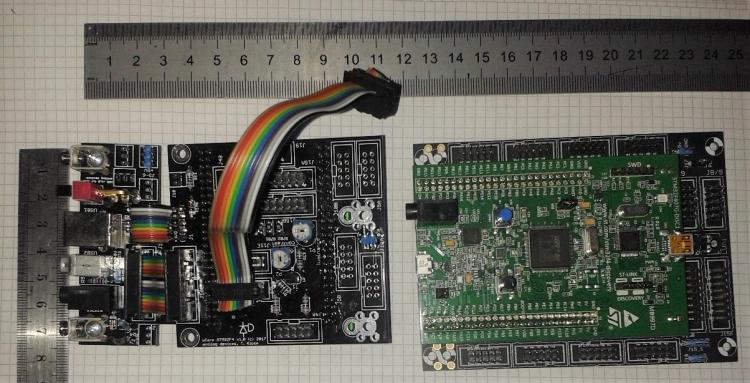-
Posts
2,524 -
Joined
-
Last visited
-
Days Won
149
Content Type
Profiles
Forums
Blogs
Gallery
Posts posted by latigid on
-
-
I think the CV staying at the last level is the expected behaviour. Also "off" would mean about -5V in a bipolar mode...
If using a modular, then just pull out the patch cable :). Or solder a switch inline with the cable to shut it off when it's not required. Most modules I know will attenuate (full anticlockwise is 0) or attenuvert (middle is zero), so these are options too.
-
Nice start!
I have questions but they can wait until you've progressed a bit.
Best,
Andy -
Don't worry, it should happen again someday...
Best,
Andy -
This one is also quite cool. The bit at the start is funny as Matthias (also drums) is describing his friend Simon playing a joke on him. Somehow John (bass) and I set up the chord progression and off we go. The end is a bit rambly but it's a jam after all!
-
Thanks! The sound at the start is the Rhodes Chroma as are the later pads. I can't remember if it was going through any effects, but it's probably the raw synth. The bass is Moog Voyager.
I have another one that sounds a bit like a didge, but it's just a Sherman Filterbank 2.
 It's pretty rough though, so I'll save your ears :).
It's pretty rough though, so I'll save your ears :).
-
1 hour ago, lacuna said:
My BiGGeST WiSh iS
Notch
- This means individual track delay, - positive and negative.
Have you tried this:
QuoteV4.089
- Groove page: by default, groove configuration changes are applied on all tracks now. It's possible to select a "local groove" by pressing GP7 button in the groove page.
- BPM page: it's now possible to configure an output delay for each MIDI port. (positive and negative delays are supported - this is currently an experimental feature!)
-
This one. It's not the depth but the "y" dimension. Notice the spare 5mm of PCB that many OLEDs have.
Best,
Andy -
-
Looks an interesting add-on, but I do like the feedback pots!
Is it single supply? What op amp? How large are the DC blocking caps?
-
Nice job! [Look ma', no snares!] Is the vocal sample from the MD or elsewhere?
Best,
Andy -
@Smithy, if you're thinking of a SEQ V4+ build, I'd hold off. Often the cheaper OLEDs are about 5mm taller, and I think we need that for the V4+. For colours, the best approach is to use a white one and put a plastic sheet (gel) in front of it.
-
 1
1
-
-
-
PA0, or you can buy a Core from me, there you get the pins on a separate header :)
-
 1
1
-
-
Hallo Gerd,
Gerne! Vielleicht TK. kann das Schema hochladen.
Viele Gruesse,
Andy -
Hallo Gerd,
Diese Pins haben kein elektronische Funktion. Die Jumpers koennen zu bleiben, oder du kannst die abmontieren.
Siehst das Schema Seite 27 , JP2 und JP3 an.
Gruss,
Andy -
The flashing LD1 has occurred ever since the newer STLink firmware. It's basically saying "there's power but no USB connection" and can be safely ignored. In the "faulty" FW this also held the main F4 MCU in reset.
-
Thanks Tim, and best of luck.
-
Bruno, looks nice! Your offer is kind, but I think it will be okay with what I have. In my experience, builders have quite some trouble even with SOIC parts, so I try to go no smaller than SOIC/1206/SOT-23. And of course THT parts when possible as they make nice jumpers!
I think the Waveshare paradigm is a good one to follow as they do a lot of STM chips:
http://www.waveshare.com/product/mcu-tools/stm32/core/core429i.htm
F4 I (with much more IO) and 1MB SD RAM onboardhttp://www.waveshare.com/product/mcu-tools/stm32/core/core746i.htm
F7 Coreetc.
Yannick, I need some weeks at least to talk with the Bavarians. I also have to prioritise giving boards out to those interested in the SEQ. But hopefully more becomes clear soon.
Best,
Andy -
Hello, total height seems to be about 30-35mm:
So even a bit higher than the Disco version with the bottom headers; about the same without. There's not much reason to keep the panel board close to the Core, although I will do it like that for the SEQ and everything aligns nicely. I suppose the signal integrity (USB, SD) is better with shorter cables.
The panel connectors are themselves quite high. Honestly, I think the only way to do it shorter height-wise would be with a dedicated STM32F4 chip on a custom PCB. With a breakout it's fairly much plug-and-play, and probably cheaper.
https://eckstein-shop.de/Core407V
-
Here's a new STM32F4 Core:

It has most of the functionality of the Discovery one, but has a few improvements:
- USB ports are on the breakout, so there's proper USB B
- USB A "host" - still need to test this, but it's normally done setting the ID pin low. I've put a panel switch for selecting host/slave and there's a jumper to power the slaved device if needed.
- LEDs and reset button on the panel; "blue button" as a jumper
- a 3.5mm socket for a footswitch or gate (or for other purposes)
- some connectors for +5V supply direct off the USB bus
- 3v3 Vreg is rated at 1000mA I think
- the panel connectors could be distant from the Core
- I haven't tested the AINs, but it is possible to use an external reference.
At the moment I have the breakout mounted on female headers; I suppose they could be directly soldered if extra height is needed. The JTAG and other pin headers do take up a bit of vertical height. These could be cut off if needed; the breakout pins are still there on the headers. There is a realtime clock oscillator (and caps) that I removed as they overlapped with a port.
A downside compared to Discovery is that there isn't any ST-Link. This is easily overcome with a cheap ST-link clone, or even an old Discovery board could be used.

At least all of the functions for a SEQ are working well. I realise that some of the cabling etc. is a bit wonky for the moment.
Best,
Andy-
 3
3
-
This is all I know:
https://www.muffwiggler.com/forum/viewtopic.php?p=2542218#2542218
-
I think what has happened is the newer batch is set up to use a different clock frequency. Hopefully that's all.
-
Just had a nice jam using the BLM.
How are we going with shifting views on on the y axis? It's okay to view just 16 notes, but I find it restricts the usage, especially when using a "polyphonic" track.
Perhaps an additional idea: currently the encoder moves just one note up or down when a polyphonic track is enabled. Could the step encoder instead shift the whole shape by semitones?
(This may be the Weizen talking.)
-






Powering SEQ with USB Hub problem
in MIDIbox SEQ
Posted
Perhaps a USB "Y" cable?